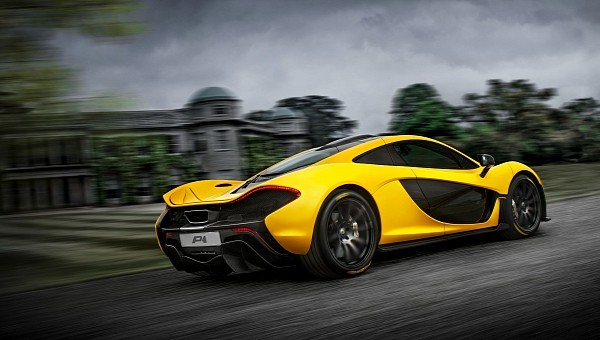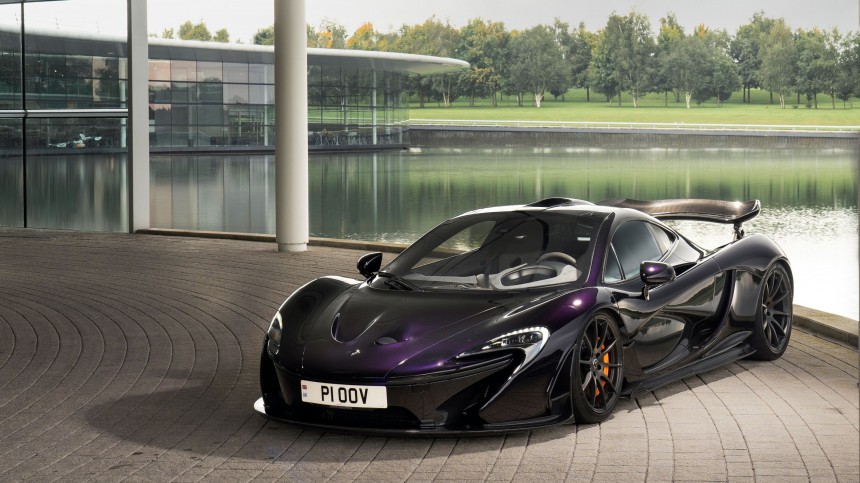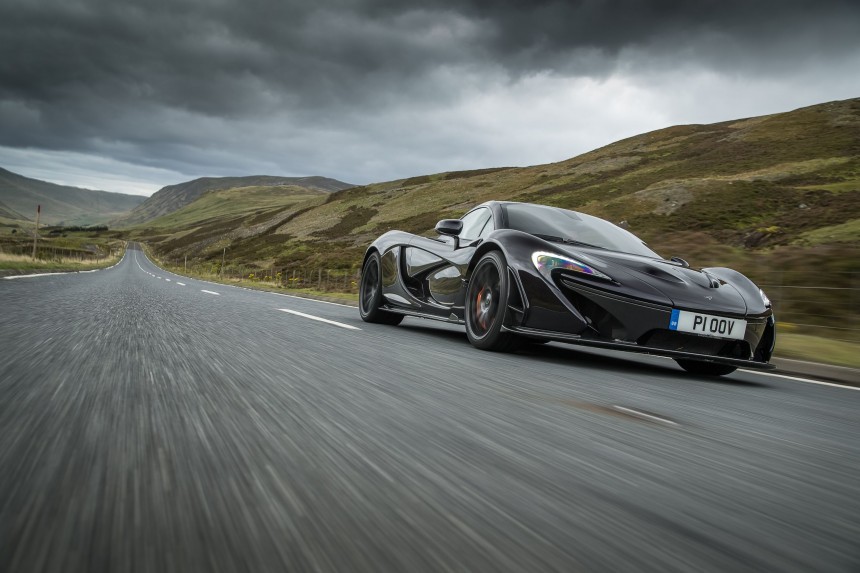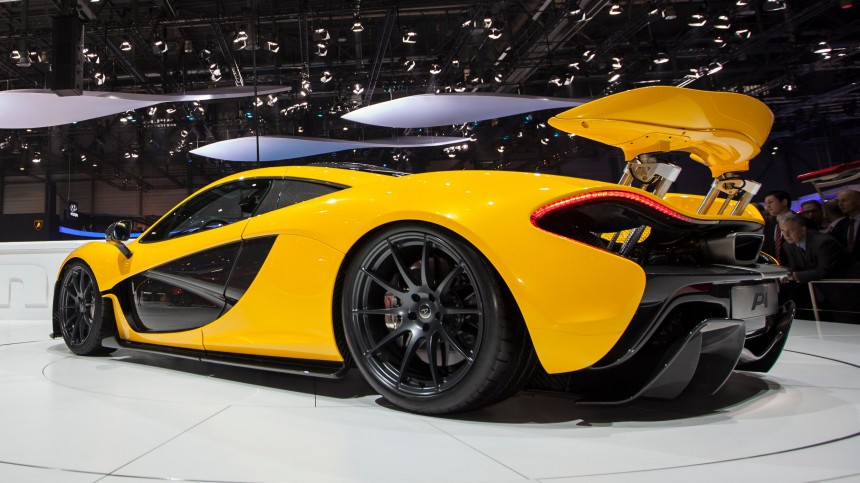If we were to create a list of the best supercars ever, the McLaren P1 would surely be on it. This month, McLaren celebrates the P1’s tenth anniversary. Unveiled as “the best driver’s car in the world on both road and track,” this stunning machine really blew the public away.
McLaren debuted the production version of the P1 at the 2012 Geneva Motor Show. It represented a milestone for both the company and the automotive industry, as it was the first hybrid supercar in the world. Its legacy lived on in other of McLaren’s hybrid models, such as the Speedtail or the newer Artura.
The company clearly had significant ambitions with the P1. It’s safe to say that they didn’t disappoint, both with the design and technical specifications. The Geneva Motor Show was the ideal place to showcase its beauty, but the P1 cemented its credentials by lapping the famous Nürburgring Nordschleife, completing it in under seven minutes.
Part of what gave the McLaren its high-performance capabilities was the 3.8-liter, twin-turbocharged V8 engine that developed 727 hp (737 ps). Add to that the lightweight electric motor capable of producing 176 hp (179 ps), and the total output stood at an impressive 903 hp (916 ps). These technical specs enabled the P1 to reach astonishing performance. It could speed up to 100 kph (62 mph) in just 2.8 seconds, could do 0-200 kph (124 mph) in 6.8 seconds, and 0-300 kph (186 mph) in 16.5 seconds – that’s five seconds quicker than the legendary McLaren F1. If you were to push it to the limit, the P1 maxed out at 350 kph (217 mph).
The immense top speed definitely helped make the P1 more popular. Still, the car also proved an important point: that electrification is worth exploring, as it can enhance modern turbocharged powertrains. Furthermore, there were other advantages to being partly electrified - using its electric motor, the vehicle could run in full electric zero-emissions mode for short-distance town riding.
Besides the powertrain, the P1 benefitted from two of McLaren’s strengths: refined aerodynamics and low weight. The vehicle featured a MonoCage carbon fiber monocoque, which was based on the MonoCell structure used in McLaren’s 12C supercar. It’s part of the reason why the P1 is so light, tipping the scales at 1,395 kg (3,075 lbs.) dry, with a DIN weight of 1,498 kg (3,303 lbs.), so that’s including everything needed to operate it and a tank of fuel at least 90% full.
Carbon fiber was also used for the body panels of the McLaren P1 – you’ll find a large clamshell, single-molded front and rear panels attached to the central MonoCage, two small access flaps in the rear, as well as a front bonnet and the two doors. They were all made from the lightweight and strong carbon fiber, adding up to a weight of only 90 kg (198 lbs.).
Another notable element regarding the P1’s low weight is the hybrid battery, which was housed low inside the carbon fiber MonoCage – it weighed a mere 96 kg (212 lbs.). Moreover, the same weight reduction strategy is applied in the Artura.
McLaren went even further and took other measures to ensure the lowest weight possible. For instance, the P1 wasn’t equipped with floor carpets, as they were considered unnecessarily heavy. Furthermore, the machine didn’t feature any sound deadening – the glass was reengineered to have less weight. The super lightweight roof glass was chemically toughened, with a thickness of just 2.4 millimeters (0.09 inches). The windscreen is just a bit thicker, with 3.2 millimeters (0.13 inches), including a plastic interlayer.
Now, let’s move on the efficient aerodynamics, a signature trait of any McLaren vehicle. Perhaps the element that stands out most regarding the P1’s aerodynamics is its massive rear wing, which adjusts automatically. It can extend rearwards by up to 300 millimeters (11.8 inches) on track and 120 millimeters (4.7 inches) on road.
The rear wing used the same software and methodology as the McLaren Formula 1 team. It also integrated a DRS (Drag Reduction System), which reduced downforce and increased straight-line speed. After many hours spent in a wind tunnel and lots of CFD (computational fluid dynamics) aerodynamic modeling, McLaren made the P1 capable of achieving a downforce of 600 kg (1,323 lbs.) at well below maximum speed.
It took just a few months for the McLaren P1 to be sold out, as it was highly desirable from the moment it was revealed. Moreover, only 375 units were built. The final car was completed in December 2015.
To this day, the McLaren P1 remains an astonishing piece of machinery that can still go head-to-head with many of today’s supercars. The British brand proved that blending thrilling dynamics with EV driving capabilities is a winning combination, and it paved the way for future electrified racing supercars.
The company clearly had significant ambitions with the P1. It’s safe to say that they didn’t disappoint, both with the design and technical specifications. The Geneva Motor Show was the ideal place to showcase its beauty, but the P1 cemented its credentials by lapping the famous Nürburgring Nordschleife, completing it in under seven minutes.
Part of what gave the McLaren its high-performance capabilities was the 3.8-liter, twin-turbocharged V8 engine that developed 727 hp (737 ps). Add to that the lightweight electric motor capable of producing 176 hp (179 ps), and the total output stood at an impressive 903 hp (916 ps). These technical specs enabled the P1 to reach astonishing performance. It could speed up to 100 kph (62 mph) in just 2.8 seconds, could do 0-200 kph (124 mph) in 6.8 seconds, and 0-300 kph (186 mph) in 16.5 seconds – that’s five seconds quicker than the legendary McLaren F1. If you were to push it to the limit, the P1 maxed out at 350 kph (217 mph).
Besides the powertrain, the P1 benefitted from two of McLaren’s strengths: refined aerodynamics and low weight. The vehicle featured a MonoCage carbon fiber monocoque, which was based on the MonoCell structure used in McLaren’s 12C supercar. It’s part of the reason why the P1 is so light, tipping the scales at 1,395 kg (3,075 lbs.) dry, with a DIN weight of 1,498 kg (3,303 lbs.), so that’s including everything needed to operate it and a tank of fuel at least 90% full.
Carbon fiber was also used for the body panels of the McLaren P1 – you’ll find a large clamshell, single-molded front and rear panels attached to the central MonoCage, two small access flaps in the rear, as well as a front bonnet and the two doors. They were all made from the lightweight and strong carbon fiber, adding up to a weight of only 90 kg (198 lbs.).
McLaren went even further and took other measures to ensure the lowest weight possible. For instance, the P1 wasn’t equipped with floor carpets, as they were considered unnecessarily heavy. Furthermore, the machine didn’t feature any sound deadening – the glass was reengineered to have less weight. The super lightweight roof glass was chemically toughened, with a thickness of just 2.4 millimeters (0.09 inches). The windscreen is just a bit thicker, with 3.2 millimeters (0.13 inches), including a plastic interlayer.
Now, let’s move on the efficient aerodynamics, a signature trait of any McLaren vehicle. Perhaps the element that stands out most regarding the P1’s aerodynamics is its massive rear wing, which adjusts automatically. It can extend rearwards by up to 300 millimeters (11.8 inches) on track and 120 millimeters (4.7 inches) on road.
It took just a few months for the McLaren P1 to be sold out, as it was highly desirable from the moment it was revealed. Moreover, only 375 units were built. The final car was completed in December 2015.
To this day, the McLaren P1 remains an astonishing piece of machinery that can still go head-to-head with many of today’s supercars. The British brand proved that blending thrilling dynamics with EV driving capabilities is a winning combination, and it paved the way for future electrified racing supercars.




